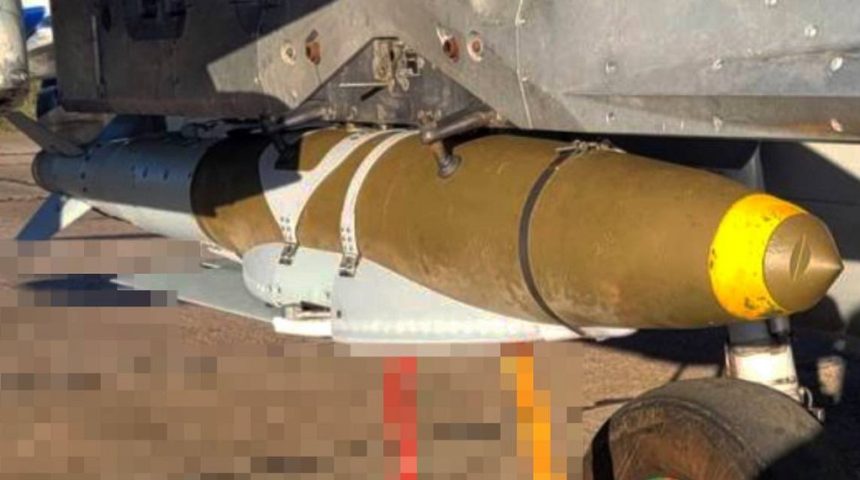The upgrade is meant to counter the proliferation of Russian EW systems that caused the effectiveness of Ukrainian Excalibur GPS-guided artillery rounds to decrease from 70% to just 6%.
It appears that the United States are taking steps to help Ukraine counter the proliferation of Russian electronic warfare systems that caused the effectiveness of GPS-guided weapons to take a plunge. The U.S. Air Force, in fact, has awarded Scientific Applications and Research Associates a $ 23.5 million contract for the acquisition of Home-on GPS Jam seekers and their integration into existing Joint Direct Attack Munition wing kits.
As we reported, Ukraine received last year the GBU-62 JDAM-ER (Joint Direct Attack Munition-Extended Range) guided bomb, which are being employed by its fighter jets thanks to special purpose-built pylons. The kit combines a pop-out wing kit with the well-known GPS tail guide kit, improving the stand-off capabilities of the weapon.
JDAM-ER is a US Glide Bomb that uses GPS to steer onto a geo-location https://t.co/3n3v66X1DH. Russia has been using tactical jammers to block the GPS signal and cause the weapons to miss https://t.co/nrnhTb7ofQ. This purchase modifies JDAMs to home in on the jammers. https://t.co/b4bqWscdMx pic.twitter.com/Xpfo4AWa55
— Greg Bagwell (@gregbagwell) May 3, 2024
Compared to the standard JDAM which can reach up to 15 miles, the Extended Range variant can hit targets 45 miles away, keeping the launching aircraft further away from enemy air defenses. It wasn’t immediately known which variant of the weapon was sent to Ukraine, however photos later showed that bomb body being employed with the JDAM-ER kit is the 500 lb Mk-82.
GPS jamming
In a written statement of Dr. Daniel Patt, Senior Fellow at The Hudson Institute, before the House Committee on Armed Services Subcommittee on Cyber, Information Technologies, and Innovation in March, it emerged that the Russians are putting a lot of work into countering the technological advantages of the new weapons sent to Ukraine. In fact, the document says the peak efficiency of a new weapon system is only about two weeks before countermeasures emerge.
Russian GPS jamming has significantly reduced the effectiveness of Ukrainian GPS guided munitions. https://t.co/xL0bKRY7nu
— OSINTtechnical (@Osinttechnical) May 3, 2024
A notable example mentioned is the case of the M982 Excalibur 155 mm extended-range guided artillery shell. In fact, the document reports the rounds initially had a 70% efficiency rate hitting targets when first used in Ukraine but, after 6 weeks, efficiency declined to only 6% as the Russians adapted their electronic warfare systems to counter it.
The same applies to other systems such as radios, with the document citing the fact that the lifecycle of a radio in Ukraine is only about three months before it needs to be reprogrammed or swapped out as the Russians optimize their electronic warfare against it. Some unconfirmed reports mentioned that GPS jamming is also affecting the use of the JDAM-ER and the Guided Multiple Launch Rocket System.
Russian jamming, however, is also going well over the boundaries of Ukraine and the military applications, as it is being extensively reported in the areas surrounding Ukraine, with a peak in the Baltic region where it is also impacting commercial aviation. In fact, Finnair had to suspend flights to Tartu, Estonia, after interference prevented two planes from landing by using the GPS RNAV procedures, which were the only ones available at that specific airport.

The Home-on GPS Jam seeker
Details about the Home-on GPS Jam seeker are limited, however Scientific Applications and Research Associates says the seeker allows a host guided bomb or missile to engage the sources of enemy radio frequency, either stray or competitive. The company also says the subsystem uses solid state components and a common munition interface, with a total cost of jut one tenth of prior-generation systems.
The sensor used is passive and can operate on GPS, S-band, Link 16 and other bands. Without providing further details, the company mentions that the seeker has already been integrated on frontline US aircraft, referring to the 2020 test with Collaborative Small Diameter Bombs.
In fact, in December 2020, the Air Force Research Laboratory modified GBU-39/B Small Diameter Bombs with the addition of the SARA HOJ seeker. At the time, the Air Force described it as a home-on-GPS-jam seeker that gathers information about the battlespace, a software-defined radio for communication between weapons, and a processor preloaded with collaborative algorithms, developed by SARA and AFRL.
An F-16 released two of the modified weapons, which quickly established communication with each other and their seekers detected a GPS jammer. However, the jammer was not the highest priority target of the weapons, based on the pre-defined ROEs (Rules of Engagement) preloaded by a mission planner, so the two CSDBs collaborated to identify two highest priority targets.
The 6-inch seeker will probably be installed on the nose of the Mk-82 bomb body, similarly to the DSU-38/B laser seeker of the GBU-54 Laser JDAM. The timeline is not known, with the contract only saying work is expected to be completed by Oct. 1, 2025.









